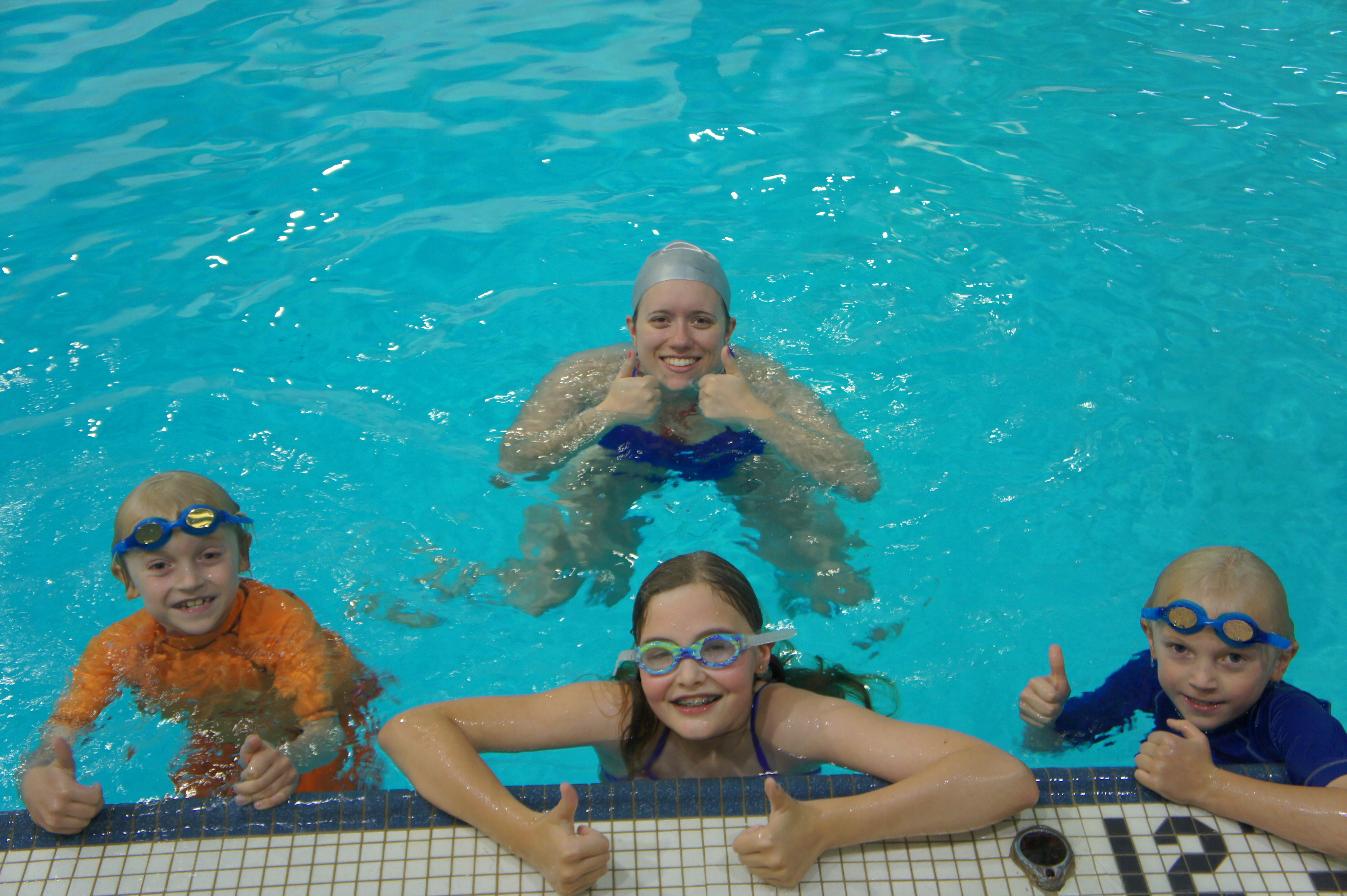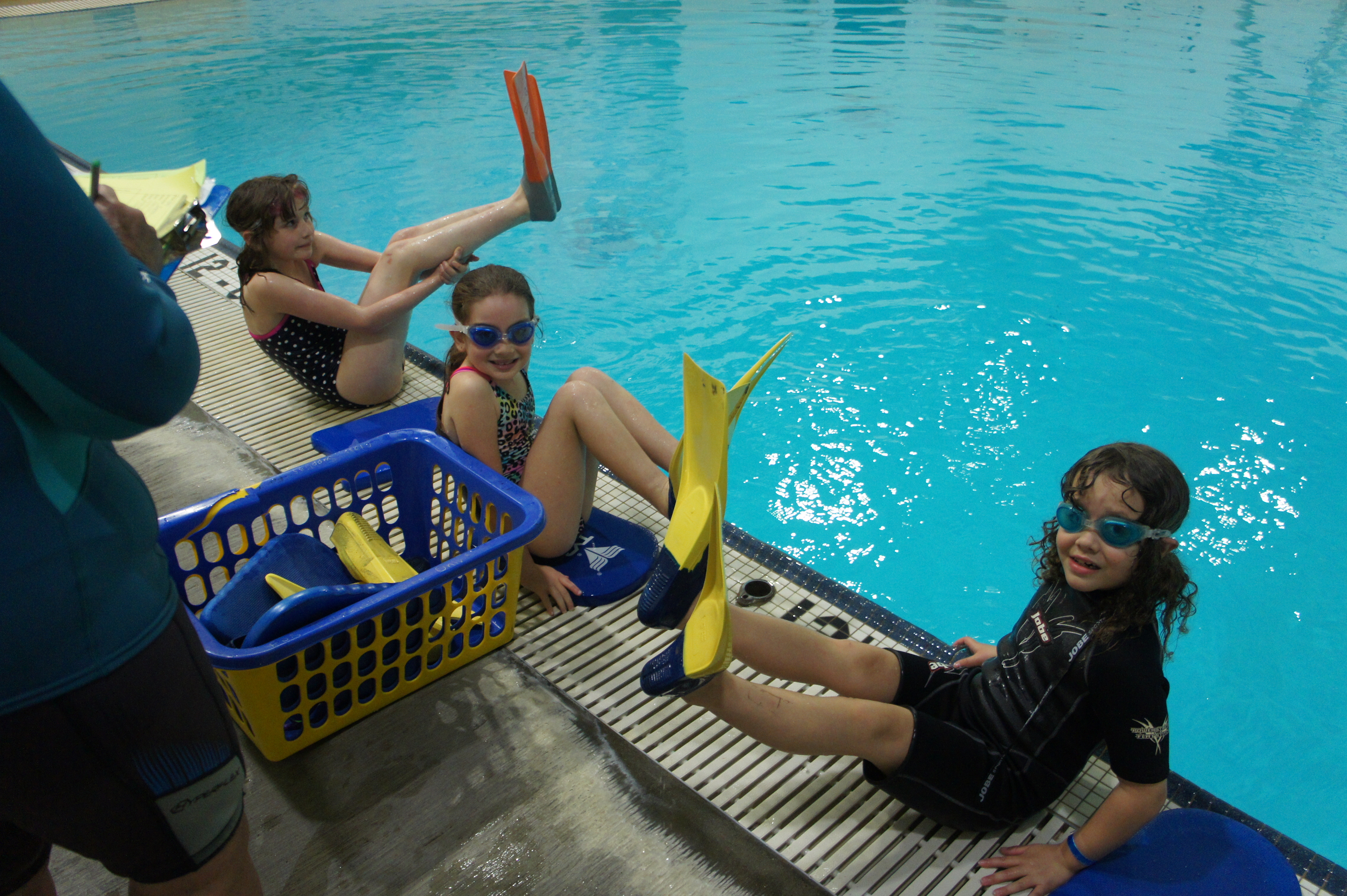Youth
Water Adjustment Ages 6 months - 5 years
The water adjustment classes are for our starting swimmers. These children can either experience the water with an instructor or with the support of a parent. Children in these levels are getting used to the water and beginning to explore the water through play.
Tiny Tots
This class is for children and their parents to experience the water together with the guidance of a certified instructor. Join our class full of playtime that will help your child adjust to the water in a fun and safe environment. This class is appropriate for children between 6 months and three years old. Children must be able to hold up their heads independently.
Tiny Starfish
This class is for children and their parents to experience the water together with the guidance of a certified instructor. Join our class full of playtime that will help your child gain confidence in working with an instructor in the water with your support. This class is appropriate for children between 2 to 5 years old. Children must be ready to begin working on skills and feel comfortable in the water.
Starfish (K1)
Starfish is for children ready to experience the wonderful world of water with an instructor independently of their parents. Swimmers should be able to follow directions and stay with the group. This class is for children who are new to swimming and are not comfortable submerging underwater or floating on their front or back. The instructors will introduce the young swimmers to the water in a fun and safe class in our zero-entry beach area.
Preschool Fish Ages 3 - 5
These little fish are beginning to build the foundations of swimming. They are learning to float and start to move in the water independently or with the support of a certified instructor. These swimmers can follow directions and work with an instructor independently of their parents.
Angelfish (K2)
Angelfish love, love, love to submerge underwater, and are very comfortable floating on their fronts and being on their back. At this level, swimmers will use their floating skills to learn how to glide to their instructor independently.
Bettafish (K3)
Bettafish are comfortable and confident floating and gliding on their front and back, and they are ready and excited to learn how to swim in the lanes. Swimmers will use their act and back glides to build their flutter kicks and introduce arm motions on both front and back.
Clownfish (K4)
Clownfish can easily glide and kick on their front and back five body lengths to an instructor. Swimmers will use these skills to build front and back crawl strokes and increase their distance. Swimmers will also learn to rotate between front and back floats and glides. Clownfish are ready and excited to explore swimming in the dive tank with their instructor.
Little Fish (K5)
Little fish are ready and eager to begin building swim strokes. They can swim halfway across the pool on their front and back and tread water and back float for 15 seconds each. Swimmers will use their front and back rotation skills to begin learning how to side breath in front crawl. Swimmers will use their back floating and gliding skills to start learning the elementary backstroke kick.
Fish Swim School Ages 6 and up
These swimming fish are learning the basic swimming and survival strokes to keep them safe in and around the water. Swimmers will move independently of an instructor and gain confidence in the water.
Guppy
Guppies have little to no experience in the water. Swimmers will learn to be comfortable and confident to submerge underwater, float, and glide independently on their front and back as they begin their swimming adventure.
Minnow
Minnows love to submerge underwater. They are comfortable floating and gliding on their front and back and are ready to swim in the lanes. Swimmers will use these basic glides to build flutter kicking on the front and back as well arm motions. Swimmers will also learn how to rotate between front and back glides. Minnows will begin to explore swimming in the dive tank with their instructor.
Fish
Fish are eager and ready to start building their swimming strokes. They can swim halfway across the pool on their front and back and tread water and back float for 15 seconds each. Swimmers will use their front and back rotation skills to begin learning how to side breath in front crawl. Swimmers will use their back floating and gliding skills to start learning the elementary backstroke kick. Many of the floating and treading skills are taught in the dive tank.
Fly Fish
Flying fish can easily and comfortably float on their back and tread water in the dive tank for 30 seconds each. Swimmers are comfortable swimming 2/3 pool length for both elementary backstroke kick and swimming back crawl and front crawl with rhythmic breathing. Swimmers will build on these basic skills to learn the full elementary backstroke and swim front crawl with more consistent side breathing. Scissor kick and sidestroke will be introduced. A successful flying fish is ready to get its swim license.
Fish Stroke School Ages 6 and up
Swimmers at these levels are refining the basic strokes and adding competitive strokes to their skill set. Swimmers are also increasing their endurance while maintaining proper stroke technique. Swimmers are also learning additional swimming skills such as diving, survival swimming, and refining their treading.
Sting Ray
Sting Rays can float on their backs and tread water in the dive tank for 1 minute each. Sting Rays can swim front crawl with consistent side breathing and correct elementary backstroke for 2/3 of a pool length. Sting Rays can swim back, crawl, and sidestroke across the dive tank with a good kick and rhythmic arm motions. Swimmers will build on these skills to refine the front crawl and elementary backstroke so that swimmers can swim the entire pool length with consistent technique. Swimmers will continue to refine the side stroke and learn the dolphin kick and breaststroke kick on their front.
Manta Ray
Manta Rays can tread water for 1 ½ minute, swim front crawl with correct side breathing, and the elementary backstroke with a consistent glide for one pool length. Manta Rays can swim sidestroke with a consistent scissors kick and breaststroke kick with glide for 2/3 of a pool length. Manta Rays can dolphin kick in streamlined five-body lengths. Swimmers will use these skills to refine the front and back crawl, elementary backstroke, and sidestroke so that swimmers can swim the strokes with a consistent form for longer distances. Swimmers will use the dolphin kick to develop the butterfly stroke, and the breaststroke kick will be developed into the breaststroke.
Dolphin
Dolphins can tread water for 2 minutes, swim both the front crawl and elementary backstroke with correct technique, and maintain form for two pool lengths. Dolphins can swim butterfly, breaststroke, back crawl, and sidestroke with proper timing and technique. Swimmers will learn front and back flip turns and focus on stroke refinement, efficiency, and endurance. Swimmers will work on the skills needed to join the swim team, swim for fitness, or gain stroke proficiency to become a lifeguard or swim instructor.
Youth Specialty Classes
Splash into Fitness 1
Ages 11 and under. This class is for the younger swimmer who has passed dolphin and wants to keep swimming for exercise. The emphasis for the younger, smaller swimmer is developing endurance and pacing with shorter repeat sets. Swimmers must be able to swim front crawl two pool lengths with good side – breathing the entire distance.
Splash into Fitness 2
Ages 11 – 17. This class is for the older swimmer capable of continuously swimming front crawl for eight pool lengths. Emphasis is on training which will enhance fitness, conditioning, and pacing. Personal goals may include developing swimming into a life- long fitness sport or conditioning for the high school swim team.
Diving Fish Level 1
Divers in level one are learning hurdles and the basics of safely jumping off the diving board. Divers begin to work on learning basic jumps in pike, tuck, and straight position. Divers also learn to go headfirst forward and backward while maintaining body position.
Diving Fish Level 2
Divers are refining their approach on the board while building their diving skills. Participants use the one-meter diving board for these skills. Skills include hurdle and approach forward, backward, pike, tuck, and stretch positions.
Intermediate Diving Fish
Intermediate Diving Fish is for those divers beginning to build skills to advance to the diving club. This level will use both the one-meter and three-meter springboards. To participate in this class, you must have passed Diving Fish Level 2 or have instructor approval.



Program Contact Information:
Marjorie LeMaster
Aquatic Program Manager
mlemaster@biparks.org
206-842-2302
